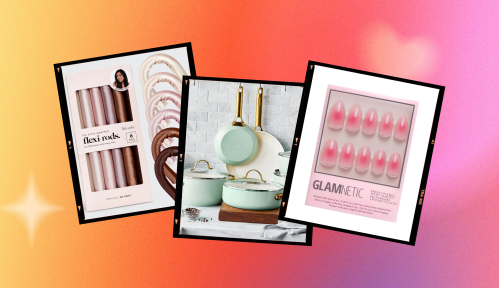Our editors independently select these products. Making a purchase through our links may earn Well+Good a commission
Full disclosure: I actually have a Dyson air purifier situated in the largest room of my home. That one machine—mighty as it may be—doesn’t purify my entire living space, given that I live in a perpetually dusty space in smoggy Los Angeles with two dander-dropping cats and their particle-spewing litter box. But since I can’t afford to Dyson-ify each room, I keep at least one window cracked 24/7, clean regularly (though not as often as I should), and just hope I’m not harming myself with indoor air pollution. Clearly, I could stand to better educate myself by exploring natural air purifier options.
Experts in This Article
cleaning expert and author of Clean Mama’s Guide to a Healthy Home
microbiologist and author of The Germ Files
non-toxic living expert and founder of Ruan Living
To pinpoint an effective, cost-saving solution, I began investigating different ways to naturally clean the indoor air. Below, clean living experts offer eight tips for detoxing your (and my) home the natural, cost-saving way.
Below find 8 natural air purifier options, straight from experts.
1. Prioritize plants
As evidenced by her uber-green office, Well+Good Council member Sophia Gushée is a plant fanatic. Her obsession isn’t simply aesthetic, either. “Some plants have been proven to convert harmful chemicals, like formaldehyde and benzene, into oxygen,” Gushée tells me. Her favorite plants that have natural air purifier powers are Sansevieria trifasciata (or snake plant), peace lillies, and the Zamioculcas zamiifolia (or ZZ plant). “They are low maintenance plants that can survive my dry NYC apartment and hectic lifestyle,” she explains.
And for a deeper dive into detoxing your home, watch the What the Wellness episode below that’s dedicated to just that.
Becky Rapinchuk, the voice behind Clean Mama and author of Simply Clean, also recommends adding plants to your space if you’re looking to naturally detoxify the air, and her favorites are the areca palm, the lady palm, and rubber plants.
That’s great, but I currently have exactly three barely surviving plants in my home, and Gushée insists this isn’t even adequate air purification. “You really do need a ton of plants for them to make a meaningful impact on indoor air quality, so I have a ton but it’s probably not even enough,” she says. So, if this natural air purifier option is for you, stock up on that green goodness—and use this full guide to the green cleaning machines.
2. Reduce sources of air pollution
“Just as we exhale and excrete waste, so do most of our things,” Gushée says, noting that many household products are made of chemicals that get released into air and dust, and some of these chemicals make their way into our bodies. The best way to minimize indoor air pollution? Reduce the sources. “Start with reading ingredient labels for ‘fragrance’ in spray products. Fragrance can contain hundreds of ingredients, including toxic chemicals,” she says. “Spray products spread the chemical formulas into the air so that you can inhale them (a fast way for chemicals to enter your lungs and bloodstream), and those formulas can also settle onto surface areas that become absorbed or ingested later.”
Opting for non-toxic cleaning products can help, too, whether those are at-home mixes or virtuous store-bought varieties like Blueland.
3. Vacuum and dust regularly
You can lessen the impact of aforementioned dust and dander by ensuring surfaces are as clean as possible. Carpet and rugs are especially good at collecting air pollutants, so be sure to clean them regularly. “Carpets are tricky,” Gushée says. “They’re a reservoir of dust and allergens, and if you have carpet that is wall-to-wall, or really large so it’s under heavy furniture, it’s really hard to clean properly.” To make this easier, she recommends investing in carpet tiles.
4. Go burn-free
Consider dialing back a bit on your smudging and candle-burning habit. “Burning anything probably releases fumes that aren’t great,” says Gushée. If you can’t quit completely, she suggests swapping paraffin candles for beeswax varieties, noting that while there’s a lack of scientific data supporting the air purifying capabilities of beeswax, it’s still better than petroleum (aka paraffin) to burn indoors.
“Consider the material of the wick as well,” Gushée adds. Some, it turns out, contain metals such as lead and zinc, which are emitted into the air when burned. One study showed that burning four such candles for two hours resulted in airborne lead concentrations that pose a health risk to humans.
5. Open the windows regularly
If you must smudge or burn, be sure to keep your windows cracked. Rapinchuk says this simple trick to keep fresh air circulating might be easier to execute in some climates than others.
“If you have the ability to open windows, and the outside air is safe, this will help to dilute out any pollution that might be stagnant inside,” agrees microbiologist and author of The Germ Files Jason Tetro.
6. Maintain clean filters
Rapinchuk also recommends changing your furnace filters regularly, in addition to cleaning and replacing your air-conditioner filters regularly, too. If you have central air, Tetro recommends investing in a HEPA filter, which is designed with a web of fibers that catches harmful air particles before you breathe them in.
7. Try this box-fan hack
This is basically a natural air purifier for the especially thrifty, and it can be utilized when air quality seems more dismal than usual (or every day, should you so choose).
8. But maybe invest an air purifier, too
Gushée and Rapinchuk both recommend investing in an actual air purifier as well as taking the above measures, when possible. There are models available in a range of price brackets, and given that our environment isn’t getting cleaner anytime soon, consider bumping up the investment on your priority list.
Sign Up for Our Daily Newsletter
Get all the latest in wellness, trends, food, fitness, beauty, and more delivered right to your inbox.
Got it, you've been added to our email list.











